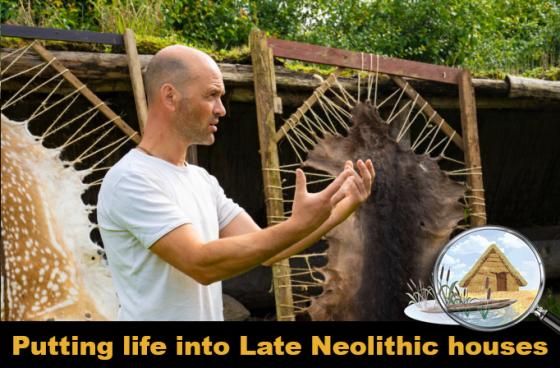The essential knowledge of a craftsperson

The research project Putting Life into Late Neolithic Houses is a rather comprehensive research project that aims to understand various aspects of Neolithic life in the Rhine/Meuse delta of the Netherlands. Because of the interdisciplinary nature of the project, people with different skills and knowledge are required. Apart from academics, the project needs people skilled in crafts. Our team member Diederik Pomstra is such a craftsperson.
Knowing Diederik’s background, one would not expect him to be an experimental archaeologist. He studied Dutch and International Law in Utrecht, and trained as a jurist, he started his professional career at Amnesty International where he facilitated the work of the doctors who documented the effects of torture, and at VluchtelingenWerk Nederland where he gave legal advice to refugee lawyers. Although this challenging work to defend human rights and being confronted with the devastating consequences of war did affect him, he never consciously exchanged his job for a career in experimental archaeology.
Becoming a self-employed stone age craftsperson was not a watershed moment. The interest for prehistoric technology was already present early on. “Life just brought me there,” Diederik recalls when elaborating on his trajectory from being a jurist to an archaeologist. However, a moment that did boost his profession as an experimental archaeologist, or at the very least steered him towards becoming a full-time archaeologist was a chance encounter with Annelou van Gijn during a Mesolithic living project in Horsterwold (Flevoland) in 2005. Since then, Diederik contributes to research projects of scientists from various universities as a toolmaker and performer of experiments.
Being a nature-lover all his life, experimental archaeology certainly increased that devotion to nature, although he would say that nature led him towards experimental archaeology rather than vice versa. Gaining extensive experience in prehistoric crafts certainly made him more aware of nature as a source for tools and materials. Now, he keeps a close eye on what the seasons offer in order to plan the harvesting of the materials and shape them into tools subsequently, a transformation process that fascinates him time and again. While he was already familiar with most materials he works with, antler is something he learned to appreciate along the way. In that sense, his profession broadened his horizon. Yet, even after all those years of professional experience, he is still driven by an insatiable creative hunger for trying out new materials. For example, making a lime bark canoe, as an equivalent of the Native American birch bark canoe, is on top of his bucket list. “It is so logical,” says Diederik referring to the bark and its properties to make a boat. And seeing the ‘logic’ of natural sources to make tools is exactly why we need a craftsperson in our research team.
As EXARC is also involved in RETOLD.eu project where we capture the craft activities and stories around the craftsperson. This very well shows how important it is for both academic world and museums.
